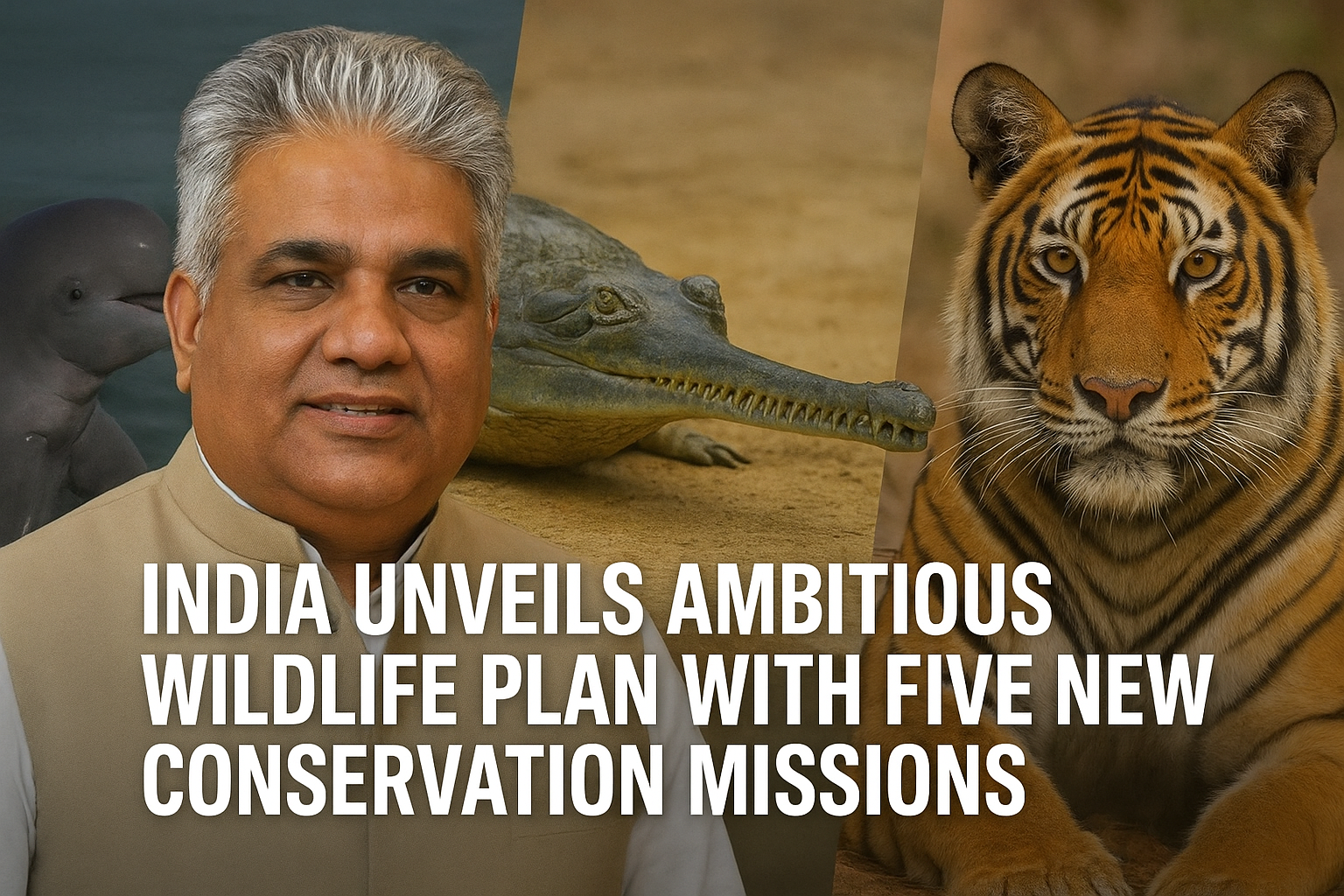
The central government has launched five major wildlife conservation projects as part of this year’s National Wildlife Week. The initiatives aim to strengthen species protection and address increasing human-wildlife conflict across India.
Announced by Union Environment Minister Bhupender Yadav, the projects include Project Dolphin (Phase-II), Project Sloth Bear, Project Gharial, the Centre of Excellence for Human-Wildlife Conflict Management (CoE-HWC) at the Salim Ali Centre for Ornithology and Natural History (SACON), and Tigers Outside Tiger Reserves. Together, they mark a renewed effort to safeguard both iconic and lesser-known species while promoting coexistence between humans and wildlife.
Speaking at the launch event held at the Forest Research Institute in Dehradun, Uttarakhand, Yadav unveiled four new national-level action plans and field guides to assist population monitoring and conservation programmes. These new measures will not only cover flagship species such as dolphins, gharials, and tigers but also include snow leopards, the Great Indian Bustard, and the Lesser Florican—species facing critical threats from habitat loss and human encroachment.
Yadav stressed the need for maintaining a delicate balance between human development and wildlife protection. He noted that while humans possess the ability to innovate and create, they must also recognize their responsibility as stewards of nature. “Humans can make anything, any app or infrastructure, but we cannot recreate an animal,” he said. “We are trustees of nature and wildlife.”
He also reminded that humans have the power to destroy what they create. Hence, the approach to development must be balanced, ensuring that progress does not come at the cost of biodiversity.
India observes National Wildlife Week from October 2 to 8 every year to promote awareness about the importance of wildlife conservation. This year’s theme focuses on fostering harmony between humans and animals, particularly in regions where conflicts over habitat and resources are intensifying.
One of the most ambitious components of the new plan is the project targeting tigers living outside traditional reserves. According to official data, India holds about 70 percent of the global tiger population, with nearly one-third of these majestic animals residing outside protected areas. The government plans to control human-tiger conflicts through landscape-level interventions, improved habitat connectivity, and capacity building for local communities.
The Tiger Outside Reserves project will involve coordinated efforts between forest departments, conservation NGOs, and local panchayats. Measures will include rapid response teams, awareness campaigns, and the deployment of modern monitoring technologies.
Similarly, Project Dolphin (Phase-II) aims to build on earlier successes by enhancing conservation efforts for river and marine dolphins and other cetaceans. The initiative emphasizes community participation and sustainable livelihood options for people living near dolphin habitats.
The Project Gharial will focus on reviving populations of the endangered freshwater crocodile species that inhabit major Indian river systems. The sloth bear project, meanwhile, seeks to reduce conflict with humans through habitat restoration and awareness drives.
Through these efforts, India reaffirms its commitment to protecting wildlife in a way that respects both ecological balance and human needs. The government’s latest conservation roadmap recognizes that the survival of species and the health of ecosystems are deeply intertwined with the nation’s own sustainable future.





















